In the vast field of aerospace engineering, precision and quality are non-negotiable. As an avid fan of aerospace technology, I'm excited to take you into the world of CNC machining of aerospace parts, where precision meets innovation.
CNC machining is a crucial technology in aerospace manufacturing, providing a powerful tool for creating high-precision, high-reliability parts. CNC machining, which stands for Computer Numerical Control, is a highly automated manufacturing method that uses computer programs to control the movement of machine tools and tools to create precision parts and components. The core concepts of this process include the following key elements:
The first key element of CNC machining is computer programming. Engineers use CAD (Computer Aided Design) software to create a digital model of the part. They must then write CNC programs, which are a series of instructions that tell the machine tool how to cut and machine the part in precise coordinates in three-dimensional space. These programs are usually written by professional CNC programmers, ensuring accuracy and efficiency of operations.
CNC machining requires high-precision machine tools such as milling machines, lathes, grinders and EDM machines. These machines can operate at the micron level, ensuring that the geometry and dimensions of the part meet the design requirements. This is critical in aerospace manufacturing as even small deviations can lead to part failure.
Another important element is the cutting tool. Different materials and workpiece shapes require different types and sizes of tools. Cutting tools must be sharp, wear-resistant, and able to maintain stability at high speeds. CNC machining operators must inspect and replace tools regularly to ensure quality and efficiency.
The motion of a CNC machine is controlled by a CNC control system. These systems typically use programming languages such as G-code and M-code to control the speed, position and direction of the tool in subtle ways. The operator must understand these codes to ensure proper operation of the machine tool.
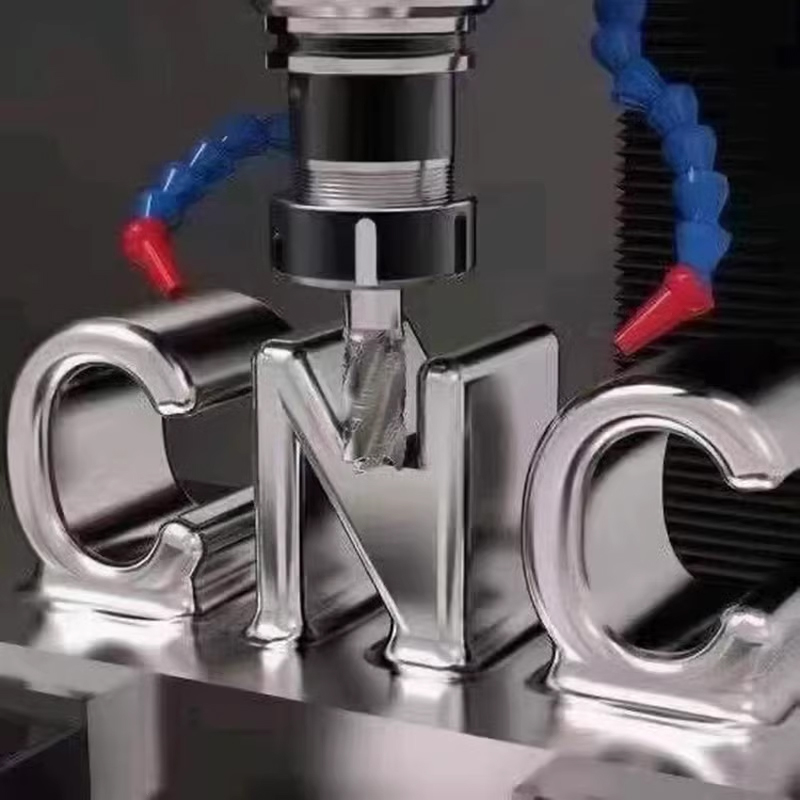
CNC machining plays a key role in aerospace manufacturing and is vital to achieving high precision, high reliability and lightweight components. Here are a few key roles of CNC machining in aerospace:
Aerospace requires extreme precision in parts. CNC machining can operate at the micron level to ensure that the size and shape of the part meets the design specifications. This high level of precision is necessary to manufacture critical components such as engine parts, aircraft structures and navigation systems.
Aerospace parts often have complex geometries that are nearly impossible to accomplish with traditional manual machining methods. CNC machining can accurately cut complex shapes based on CAD models, ensuring the functionality and performance of the part.
CNC machining allows for efficient production, reducing the risk of human error and increasing production speeds. In aerospace manufacturing, this means faster lead times and lower production costs.
Aerospace parts are often made from a wide variety of materials, including aluminum alloys, titanium alloys, and composites. CNC machining offers the flexibility to adapt to a wide range of materials to ensure part quality and performance.
CNC machining allows for a highly automated production process and is equipped with a monitoring system that allows for real-time monitoring of process parameters and quality indicators. This helps to identify and solve potential problems in a timely manner, ensuring production stability and reliability.
The aerospace industry has long been one of the frontiers of materials science and engineering, as it requires manufacturing materials with extremely high performance and reliability to cope with extreme operating conditions. Understanding the wide range of materials used in aerospace is key to understanding its complexity.
Metallic materials have been one of the main choices in the aerospace industry. The following are some of the common metallic materials:
- Aluminum alloys: Aluminum alloys are widely used in components such as aircraft structures, wings and bulkheads because of their light weight, corrosion resistance and machinability. They play an important role in aircraft design as they help reduce overall weight and improve fuel efficiency.
- Titanium Alloys: Titanium alloys are extremely strong and corrosion resistant, which is why they are used in aerospace to make engine parts, flight control systems, and aerospace vehicle housings. Their lightweight nature makes them ideal for aerospace designs.
- Magnesium Alloys: Magnesium alloys also have a place in aircraft manufacturing because they are very light and are suitable for minor components such as seat frames and interior trim.
- High-temperature alloys: High-temperature alloys are a special class of metal alloys that have the ability to maintain strength and corrosion resistance in high-temperature environments. They are commonly used in components such as engine nozzles, turbine blades, etc., which need to operate at high temperatures and pressures.
Composite materials are also playing an increasingly important role in aerospace. Composites usually consist of a combination of two or more materials in order to fully utilize the advantages of each material.
- Carbon Fiber Composites: Carbon fiber composites have an excellent strength-to-weight ratio and are therefore often used in the manufacture of aircraft fuselages, wings and other structural components. The lightweight nature of these materials helps improve the fuel efficiency of aircraft.
- Fiberglass composites: Fiberglass composites are often used to manufacture interiors, bulkheads and other minor components because they are relatively inexpensive, but also offer excellent strength and durability.
In addition to metals and composites, many other materials are used in aerospace, including plastics, ceramics and ceramic composites. Each material has unique properties for different applications.
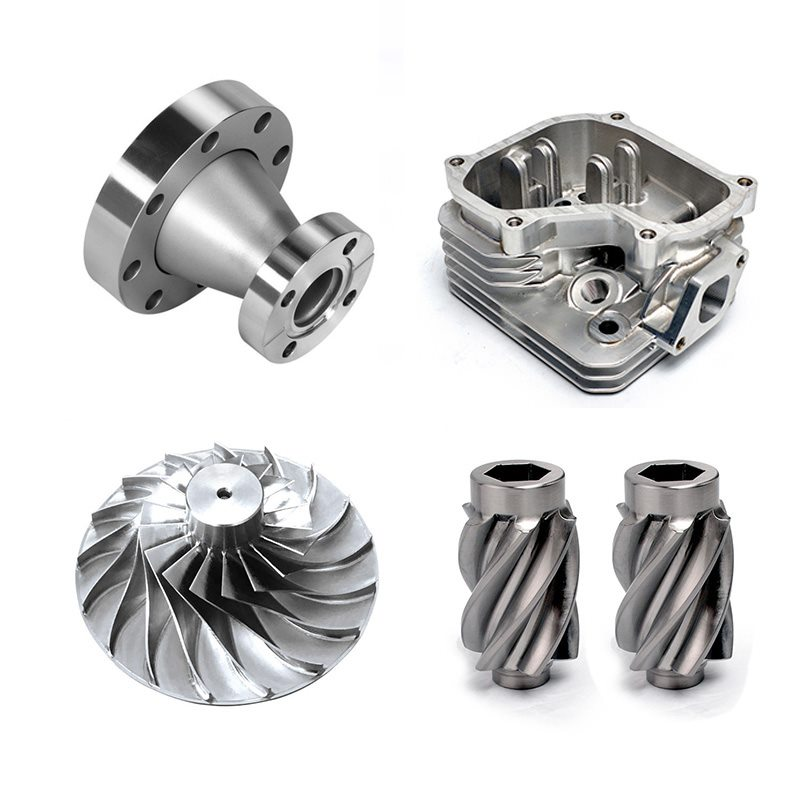
Aerospace engineers must give full consideration to the performance needs of the part and the operating environment when selecting materials. The choice of material has a profound effect on the performance and reliability of the part, and the following are some of the key factors:
Different materials have different strengths and stiffnesses. Engineers must select materials with appropriate strength and stiffness based on the design requirements of the part to ensure that the part will not deform or rupture under operating loads.
Aerospace vehicles operating in marine or high humidity environments may require corrosion resistant materials. Metallic materials often require special coatings or alloys to improve their corrosion resistance.
Aerospace engineers often need to weigh the strength of a part against its weight. Choosing lightweight materials can reduce the overall weight of an airplane and improve fuel efficiency, but must also ensure that safety and performance are not sacrificed.
Parts that operate inside engines and in other high-temperature and high-pressure environments require materials that are resistant to high temperatures and pressures. High temperature alloys and composites are commonly used in these applications.
Finally, engineers must also consider the cost and availability of materials. Sometimes, the choice of a material can be influenced by budgetary constraints and supply chains.
Aerospace material selection is a complex process that requires engineers to consider several factors. The right choice of material can ensure that aerospace parts perform well under extreme conditions and safeguard the performance and safety of the vehicle. In the ever-evolving field of aerospace, materials science and engineering will continue to drive innovations that will bring greater performance and reliability to future vehicles.
In aerospace, precision is critical when it comes to the geometry, dimensions and surface quality of parts. CNC machining stands out for its superior accuracy and repeatability, offering unrivaled benefits in the manufacture of aerospace parts.
CNC machining can achieve micron-level accuracy, which is critical for aerospace components. Whether it's a critical component inside an engine or a delicate part of an aircraft structure, accuracy is a decisive factor in ensuring performance and safety.
CNC machining machines and control systems are able to perform the same operation over and over again without error. This means that mass-produced parts are of consistent quality, maintaining the same accuracy and performance whether it's the first part or the last.
In aerospace, some parts have complex geometries that are difficult to meet with traditional machining methods. CNC machining makes it easy to handle these complex shapes with precise toolpath control, ensuring that every detail is accurately reproduced.
In addition to accuracy and repeatability, CNC machining offers significant productivity and cost control benefits in aerospace manufacturing.
CNC machining is a highly automated manufacturing process. Once a program has been set up and verified, the machine tool can run continuously without human intervention. This means that production capacity can be significantly increased while reducing the risk of manual labor.
Due to the precision of CNC machining, scrap rates are significantly reduced. Whereas conventional machining methods can result in higher scrap rates due to errors or unstable cutting processes, CNC machining virtually eliminates these problems.
CNC machining allows parts to be produced faster. CNC machining often results in significantly shorter lead times than traditional manual or other machining methods, allowing aerospace manufacturers to respond faster to market demands.
CNC machining can be easily adapted to different production needs. By simply changing the CNC program, the machine can be switched to a different part production without the need for a major machine changeover or reconfiguration. This flexibility is essential to adapt to changing market demands.
Although CNC machines have a high investment cost, they can significantly reduce manufacturing costs in the long run. Factors such as lower scrap rates, increased productivity and reduced labor costs can significantly reduce the cost of manufacturing components.
In aerospace manufacturing, the performance and quality of each component has a profound impact on the safety and reliability of the overall system. CNC machining offers significant benefits to the aerospace sector by providing a highly accurate, repeatable and efficient manufacturing method. Not only does this enable aerospace manufacturers to produce more reliable and high performance products, it also helps to reduce costs and increase competitiveness. As a result, CNC machining occupies an integral part of the modern aerospace industry and will continue to drive growth and innovation.

In aerospace manufacturing, the IV (CNC Vertical) machining process is a widely used CNC machining technology that plays a key role in the manufacture of components. The principle and operation flow of IV machining process will be described in detail below.
IV machining process is a vertical machining method, which is usually realized by using CNC vertical machining centers. Its basic principles include:
Workpiece clamping: first, the workpiece to be machined will be clamped to the machine table, usually using fixtures or workpiece clamping devices to stabilize the position of the workpiece.
Tool selection: According to the geometry and material properties of the workpiece, suitable cutting tools are selected. These tools typically include milling cutters, drills, reamers, etc.
CNC Programming: Engineers must write a CNC program, which is a series of instructions that tell the machine tool how to cut the workpiece. This includes the path of the tool, feed rate, depth of cut, etc.
Automated Machining: Once the CNC program is loaded into the machine tool's control system, the machining process is automated. The cutting tool cuts the workpiece following the path defined in the program.
Real-time monitoring: IV machining is usually equipped with a real-time monitoring system to monitor tool wear, temperature variations and workpiece quality during the cutting process. This helps in making timely adjustments to the parameters to ensure quality machining.
IV machining can be used for a variety of machining processes including but not limited to:
Milling: Removing material from the surface of the workpiece by rotating the tool to achieve flat, curved and contoured surfaces.
Drilling: Using a drill to cut circular holes or arrays of holes for securing bolts, connecting parts, or machining channels.
Tapping: Using a tapping tool to create threads in a workpiece for bolts, nuts or other connecting elements.
Reaming: Cutting internal or external threads of workpieces by rotating reamers for joining, sealing or adjusting devices.
To perform IV machining processes, CNC vertical machining centers are usually required. These machines have vertical spindles that can move in multiple directions for multi-axis machining. Their features include:
Automatic Tool Switching: CNC vertical machining centers are often equipped with automatic tool switching systems that can accommodate multiple cutting tools for multi-process machining.
High-speed spindles: High-speed spindles can rotate tools to cut material at high speeds, improving machining efficiency.
CNC Controls: CNC controls on the machine allow programmers to write and load CNC programs that control the movement and operation of the tool.
IV machining process has a wide range of applications in the aerospace field, the following are some typical cases:
1. Manufacture of aircraft structural parts
In the manufacture of aircraft, a large number of structural parts require IV machining to ensure the accuracy of their geometry. These structural parts include components such as wings, bulkheads, fuselages and tails.
2. Engine component manufacturing
Engine components are critical to the performance of aerospace vehicles, and IV machining is used to machine key components within the engine, such as turbine blades, nozzles and combustion chamber components.
3. Spacecraft Component Manufacturing
In spacecraft manufacturing, IV machining is used to create housings, payload modules, connectors and other critical components. These components must be highly accurate and repeatable to ensure spacecraft performance and safety in space.
4. Laboratory equipment manufacturing
Aerospace research and test laboratories often require specialized equipment and components, and IV machining processes allow the manufacture of high-precision components for such equipment to support scientific research and experimentation.
5. Aerospace repair and maintenance
IV machining is also widely used in the repair and maintenance of aerospace vehicles. It can be used to repair and replace damaged or aged components to ensure the availability and reliability of spacecraft.
IV machining process plays a key role in aerospace manufacturing. It provides highly accurate, repeatable and efficient machining methods that enable the aerospace sector to create safe, reliable and high performing products. As technology continues to advance, IV machining processes will continue to play an important role in aerospace, driving growth and innovation in the industry.
In aerospace manufacturing, surface finish is a critical factor that directly affects the performance, reliability and life of aircraft parts. In this section, we will take an in-depth look at the significance of surface finish and the processes and technologies that can be used to achieve a high finish.
Surface finish is critical to the aerodynamic performance of an airplane. A clean surface reduces the air resistance of an airplane in flight, thereby increasing fuel efficiency and flight speed. In aerospace, every small improvement can have a significant impact on fuel consumption and carbon emissions.
Smooth surfaces are less susceptible to corrosion and wear. Aircraft operate in a variety of harsh environments such as high altitudes, high and low temperatures and high humidity variations. Surface finish can increase the corrosion and wear resistance of parts, extending their service life.
Surface finish also has a significant impact on material properties. Parts with smooth surfaces reduce stress concentrations and improve the fatigue resistance of the part. This is critical to the structural integrity of aircraft components, especially when subjected to repetitive loading.
Smooth surfaces are relatively easy to clean and maintain, which reduces maintenance and repair costs. Aircraft are subjected to a variety of deposits and particulate matter during flight, and smooth surfaces reduce the adhesion of these deposits, reducing the frequency of cleaning and maintenance.
In order to achieve high gloss aircraft parts, a number of processes and techniques are required to ensure smooth and defect-free surfaces. The following are some of the commonly used methods:
1. Precision machining
CNC machine tools and precision cutting processes are key to achieving a high finish. These machines are capable of machining parts with high accuracy and low surface roughness, ensuring a flat surface.
2. Polishing and Lapping
Polishing and grinding are important steps in improving surface finish. Through the use of abrasives of different grit sizes and polishing tools, surface imperfections and roughness can be removed, resulting in a highly polished surface.
3. Chemical treatment
Chemical treatments, such as pickling and electrochemical polishing, remove surface oxides and impurities and improve the quality and corrosion resistance of the surface.
4. Anti-corrosion coating
In practice, anti-corrosion coatings are used to protect the surfaces of components from corrosion and chemical attack. These coatings usually include anticorrosive paints, coatings or chemical protective layers.
5. Quality control and inspection
The process of achieving a high finish requires strict quality control and inspection. Techniques such as optical surface scanning, roughness testing, and material analysis are used to ensure that parts meet specified finish requirements.
6. Cleaning and maintenance
Once a part has been manufactured, regular cleaning and maintenance are also key to maintaining a high finish. This includes removing deposits, dirt and corrosion products to keep the surface smooth and clean.
Surface finish is a critical quality factor in aerospace manufacturing. It directly affects the performance and reliability of aircraft components and is important for fuel efficiency, durability and maintenance costs. Through the use of processes and technologies such as precision machining, polishing, chemical treatment and quality control, high finish aircraft components can be realized to ensure excellent performance, safety and reliability in operation. As technology continues to evolve, surface finish requirements will continue to increase to meet the challenges of future aircraft performance and environmental requirements.
During the manufacturing of aerospace parts, proper machining methods and processes are critical to ensuring part performance and quality. Below are six tips that contribute to success when machining aerospace parts.
1.1 Cutting Speed
Cutting speed is the rate at which a tool cuts a workpiece and is usually expressed in revolutions per minute (RPM). When machining aerospace parts, the cutting speed must be set correctly for the workpiece material and tool type. Too high a cutting speed can lead to tool wear, while too low a cutting speed can lead to inefficient machining.
1.2 Feed speed
Feed rate is the speed at which the tool moves across the surface of the workpiece and is usually expressed in feeds per minute (IPM). The selection of feed rate should be based on the workpiece material, tool and depth of cut. The correct feed rate ensures the stability and quality of the cutting process.
1.3 Depth of cut
The depth of cut is the thickness of the layer of material removed by the tool in each cut. The selection of the depth of cut depends on the material and geometry of the workpiece as well as the type and condition of the tool. A proper depth of cut prevents excessive wear and improves machining efficiency.
2.1 Tool selection
Selection of the right tool is critical for machining aerospace parts. Different types of tools are suitable for different materials and machining tasks. For example, carbide tools are usually used for machining metals, while multi-flute tools are suitable for high-speed cutting.
2.2 Tool cooling
During the cutting process, tools are subjected to high temperatures and wear. The use of appropriate tool coolant can reduce tool temperature, extend tool life, and improve machining quality. The selection of coolant should consider the workpiece material and cutting conditions.
2.3 Cutting parameter optimization
Optimization of cutting parameters includes the adjustment of cutting speed, feed rate and depth of cut to achieve the best cutting results. This usually requires trials and adjustments to find the best combination of machining parameters.
Tool wear and damage can directly affect machining quality and efficiency. Therefore, it is necessary to regularly check the condition of tools and replace them in time. Tool maintenance and management is an important part to ensure the smooth running of the production process.
Quality control and inspection are critical when machining aerospace parts. Techniques such as optical surface scanning, roughness testing and material analysis are used to ensure that parts meet specified quality requirements. Rigorous quality control prevents defects and problems and reduces the need for subsequent machining.
Safety and environmental protection should always be a priority during machining. Ensure that the work area meets safety standards and that employees receive the necessary training and protection to minimize the risk of accidents. In addition, the proper use of cutting fluids and disposal of waste fluids are critical steps in ensuring environmentally friendly machining.
Processing aerospace parts is a continuous improvement process. Developing and implementing a continuous improvement program, including process improvements, equipment upgrades and training programs, ensures that the efficiency and quality of the machining process continues to improve.
Machining aerospace parts requires a combination of factors, including process parameters, tool selection, quality control and safety and environmental protection. Following these six tips can help manufacturers ensure that the performance and quality of their parts meet the high standards of the aerospace industry's stringent requirements. Continuously improving machining processes and utilizing advanced technologies and techniques will help increase productivity, reduce costs and ensure the reliability of parts under extreme conditions.
Aerospace CNC machining applications
CNC machining technology has become an integral part of the aerospace industry. This section explores the application areas, real-world examples, and future prospects and trends for CNC machining in aerospace.
Practical example: aero-engine parts machining
Aero-engine is one of the core components of an airplane, and its performance and reliability are crucial to the safety and performance of the whole airplane. Aerospace CNC machining plays a key role in the manufacturing of aero-engine parts, and the following is an actual case demonstrating its application and advantages.
Case: High Pressure Turbine Blade Machining
High-pressure turbine blades are one of the key components in an aero-engine. They are responsible for compressing air and directing it into the combustion chamber. These blades must have high precision, high strength and high heat resistance. These requirements are difficult to meet using traditional machining methods, so CNC machining has become the preferred manufacturing method.
MATERIAL SELECTION: High-temperature alloy materials are commonly used in the manufacture of high-pressure turbine blades to ensure their performance in high-temperature and high-pressure environments. These materials challenge the wear resistance and cutting performance of the tools.
CNC Machining: CNC vertical machining centers are used to machine the complex contours of the blades. Advanced tools and cutting processes are employed to ensure high accuracy and surface quality.
Surface treatment: Machined blades require heat treatment and surface treatment to enhance their heat and corrosion resistance. Chemical treatments and coatings are often used to improve surface properties.
Quality control: The quality of the blades is strictly controlled through optical surface scanning, precision measurement and material testing. Any defects are promptly identified and repaired.
This example highlights the importance of aerospace CNC machining in the manufacture of high-precision and high-performance parts. Through CNC machining, high-pressure turbine blades can achieve precise geometry and superior surface quality, ensuring engine performance and reliability.
The field of aerospace CNC machining is constantly developing and evolving, and the following are the prospects and trends for the future:
1. Machining of advanced materials
Aerospace continues to utilize new advanced materials such as composites and high temperature alloys. CNC machining technology needs to be constantly upgraded to accommodate the machining of these materials, including improved tools and processes.
2. High-speed machining
The development of high-speed CNC machining technology will further improve machining efficiency. High-speed machining can reduce machining time, reduce production costs and improve manufacturing flexibility.
3. Smart Manufacturing
The application of artificial intelligence, big data analytics and automation technology will change the way aerospace manufacturing is done. Intelligent manufacturing systems enable real-time monitoring, fault prediction and production optimization, improving production efficiency and quality.
4. Environmental protection and sustainability
The aerospace industry has increasing environmental and sustainability requirements. CNC machining technologies need to take into account the reduction of waste and resource wastage and the use of environmentally friendly materials and processes.
5. Customized manufacturing
The demand for customized manufacturing of aerospace parts is increasing. CNC machining technology offers the flexibility to adapt to different designs and specifications, providing customized solutions.
Aerospace CNC machining is an indispensable part of the aerospace industry, providing key technical support for the manufacture of high-performance parts. In the future, with the adoption of new materials, the development of high-speed machining technology and the application of smart manufacturing, aerospace CNC machining will continue to play an important role and drive innovation and progress in the aerospace industry.
Richconn is a highly recommended choice when it comes to selecting the right partner for CNC machining aerospace projects. This section describes Richconn's specialized strengths and successes in order to make an informed decision for your aerospace project.
Richconn is a leading CNC machining solutions provider with years of industry experience and expertise.
1. State-of-the-art equipment and technology
Richconn has invested in state-of-the-art CNC machining equipment and technology. They have a wide range of CNC vertical machining centers, multi-axis machines, and automated production lines to meet a variety of complex part machining needs. Not only are they able to provide standard CNC machining services, but they can also customize machining to meet specific customer requirements.
2. Highly specialized team
Richconn has a highly specialized team of engineers and technicians with rich experience in CNC machining and knowledge of material science. They are able to provide process consultation, advice on material selection and quality control support to ensure that every project meets the highest standards.
3. Quality Control and Certification
Richconn emphasizes quality control, and they employ a rigorous quality management system to ensure that every part meets customer specifications and requirements. In addition, they are ISO 9001 certified, indicating that their quality standards are internationally recognized.
4. Innovation and Continuous Improvement
Richconn actively promotes technological innovation and continuous improvement. They are constantly updating their equipment, utilizing the latest processing techniques, and seeking more environmentally friendly manufacturing methods. This spirit of innovation helps customers to reduce costs, improve efficiency and remain competitive.
Richconn has successfully partnered with several aerospace customers to provide them with high quality CNC machining solutions. Below are some examples of success stories:
Case 1: Aircraft Structural Component Manufacturing
An aircraft manufacturer partnered with Richconn to manufacture aircraft structural components.Richconn provided high-precision CNC machining services to ensure the geometry and quality of the structural components. This helps the customer produce safe and reliable airplanes.
Case 2: Satellite Component Manufacturing
A satellite manufacturing company partnered with Richconn to manufacture key components for a satellite. Richconn's advanced CNC machining technology and quality control ensured the performance and reliability of the components, contributing to the successful launch and operation of the satellite.
Case 3: Aero Engine Component Manufacturing
Richconn works with an aero-engine manufacturer to manufacture high-pressure turbine blades and other critical engine parts. Their expertise and precision machining capabilities helped the customer achieve superior engine performance, improved fuel efficiency and reliability.
These examples highlight Richconn's success and excellence in the aerospace industry. Not only do they provide high-quality CNC machining services to their customers, but they also contribute to the success of their customers' programs through partnerships.
Choosing Richconn as a partner for your aerospace CNC machining service is a wise decision. Their expertise, state-of-the-art equipment, and success stories demonstrate that they have the capabilities and experience needed to provide exceptional solutions for your project. By partnering with Richconn, you can move forward with your aerospace project with confidence in the quality and performance of the final product.
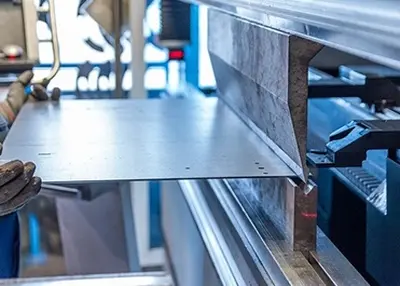 Sheet Metal Thickness Conversion Chart: Galvanized Steel, Stainless Steel, AluminumDecember 5, 2023In sheet metal work, the term "gauge" is frequently employed to specify thickness. Gauges are the units used to indicate the thickness of a metal sheet.view
Sheet Metal Thickness Conversion Chart: Galvanized Steel, Stainless Steel, AluminumDecember 5, 2023In sheet metal work, the term "gauge" is frequently employed to specify thickness. Gauges are the units used to indicate the thickness of a metal sheet.view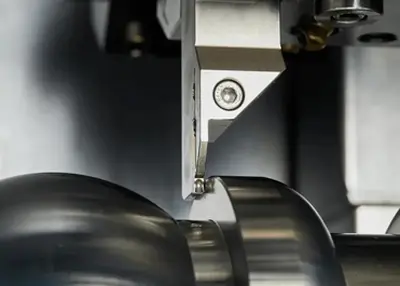 Machining tips and precautions in grooving and cutting offNovember 17, 2023The cutoff and grooving process is an important part of CNC turning machining and presents many unique challenges. During the machining process, the limitations of machine tool and tool rigidity, cooling conditions, programming techniques, tool performance and many other factors can cause problems for machining efficiency, quality and safety.view
Machining tips and precautions in grooving and cutting offNovember 17, 2023The cutoff and grooving process is an important part of CNC turning machining and presents many unique challenges. During the machining process, the limitations of machine tool and tool rigidity, cooling conditions, programming techniques, tool performance and many other factors can cause problems for machining efficiency, quality and safety.view How to Go About Choosing an Aluminum Alloy Mechanical Keyboard Shell Processing Manufacturer?October 26, 2023For computer enthusiasts, the mechanical keyboard's metal texture and the sound of that mechanical equipment is a keyboard users a kind of enjoyment, mechanical keyboard bezel styling design is one of my favorite hardware configurations, especially glazed, computer typing is very indulgent.view
How to Go About Choosing an Aluminum Alloy Mechanical Keyboard Shell Processing Manufacturer?October 26, 2023For computer enthusiasts, the mechanical keyboard's metal texture and the sound of that mechanical equipment is a keyboard users a kind of enjoyment, mechanical keyboard bezel styling design is one of my favorite hardware configurations, especially glazed, computer typing is very indulgent.view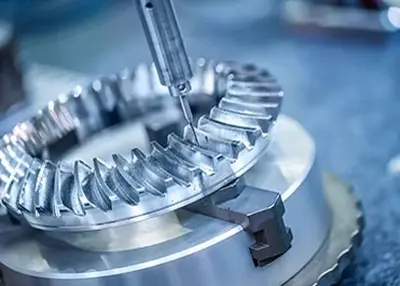 From Concept to Creation: A Comprehensive Guide to Jigs and Fixtures in Manufacturing ProcessesFebruary 27, 2024Here is a comprehensive guide to f jigs and fixtures in modern CNC manufacturing. Learn about their types, applications, and advantages.view
From Concept to Creation: A Comprehensive Guide to Jigs and Fixtures in Manufacturing ProcessesFebruary 27, 2024Here is a comprehensive guide to f jigs and fixtures in modern CNC manufacturing. Learn about their types, applications, and advantages.view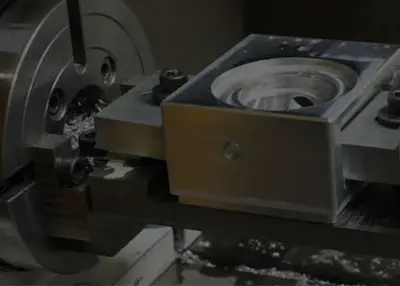 The Ultimate Guide on Aluminum Die Casting 2024August 2, 2023Nowadays, aluminum die casting is widely used in various industries like automotive, industrial, and telecommunications. It’s often used to produce electrical, hydraulic, lighting components, etc. No...view
The Ultimate Guide on Aluminum Die Casting 2024August 2, 2023Nowadays, aluminum die casting is widely used in various industries like automotive, industrial, and telecommunications. It’s often used to produce electrical, hydraulic, lighting components, etc. No...view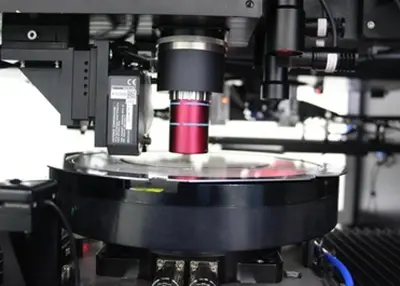 Micron-level machining accuracy 2024: Discover the endless possibilities of ultra-high-precision laser cutting processesJanuary 8, 2024Micron-level processing precision is increasingly widely used in various fields, especially in high-end manufacturing industries such as aerospace, electronic products, and medical equipment.view
Micron-level machining accuracy 2024: Discover the endless possibilities of ultra-high-precision laser cutting processesJanuary 8, 2024Micron-level processing precision is increasingly widely used in various fields, especially in high-end manufacturing industries such as aerospace, electronic products, and medical equipment.view